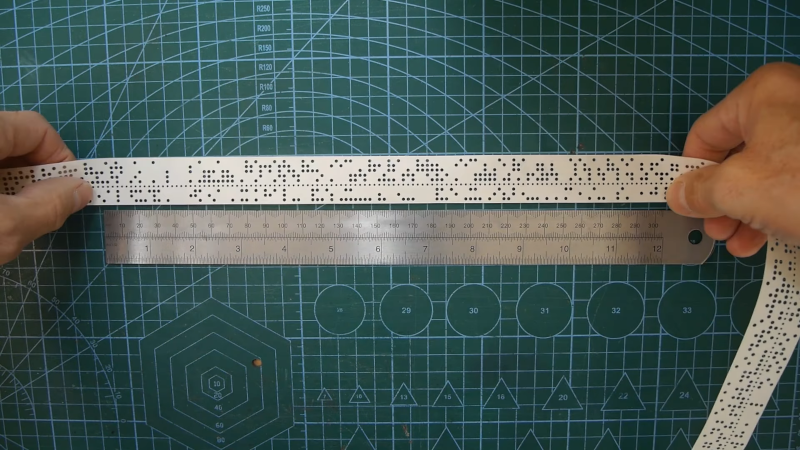
Since the dawn of computers, we’ve tried different ways to store data. These days, you grab data over the network, but you probably remember using optical disks, floppies, or, more recently, flash drives to load something into your computer. Old computers had to use a variety of methods, such as magnetic tape. But many early computers used some technology that existed from the pre-computer era, like punched cards or, as [Anthony Francis-Jones] shows us, paper tape.
Paper tape was common in TeleType machines and some industrial applications. In fact, as early as 1725, looms could use paper tape, which would eventually lead to punched cards. For computers, there were two common variations that differed in how many holes were punched across the tape: 5 or 8. There was also a small sprocket hole that allowed a gear to move the tape forward through a reader.
Typically, brushes or optical sensors would read the holes into the computer. Some paper tape used regular paper, but others used oily paper. You could also get tapes made out of mylar, which was very durable.
The other big difference in tapes was in how they were punched. A conventional tape had the entire hole punched out, leaving confetti-like “chad.” There were also chadless tapes where the chad was left slightly connected to the paper.
One common feature of paper tape was that it would skip any section where every hole had been punched. This allowed you to erase parts of the tape by punching over it. Then, with scissors and tape, you could splice sections by lining up the fully punched areas between two sections of tape. You could also make endless loops of tape.
Paper tape was used as a crude word processor back in the day. They were even used to send wire photos.
